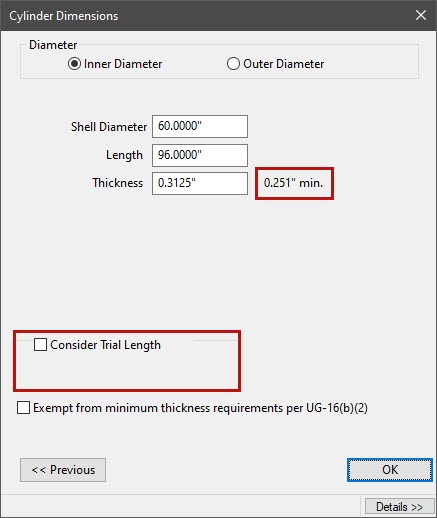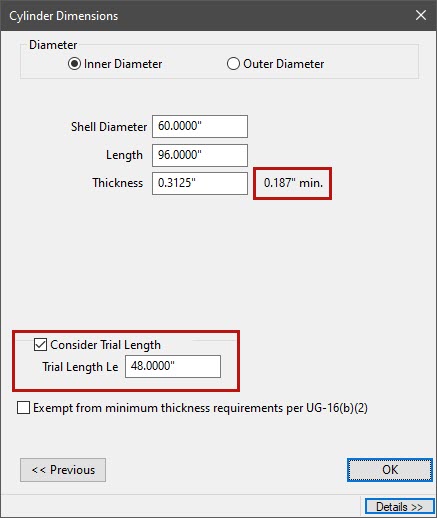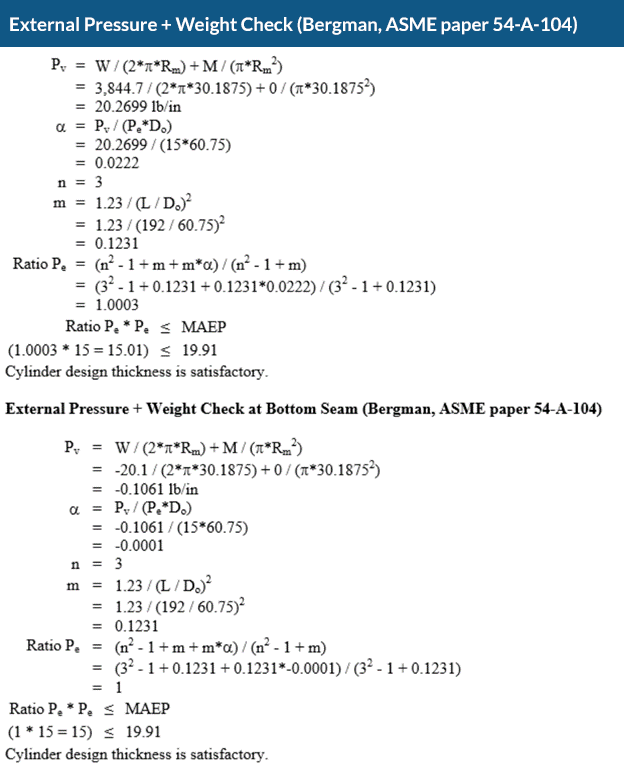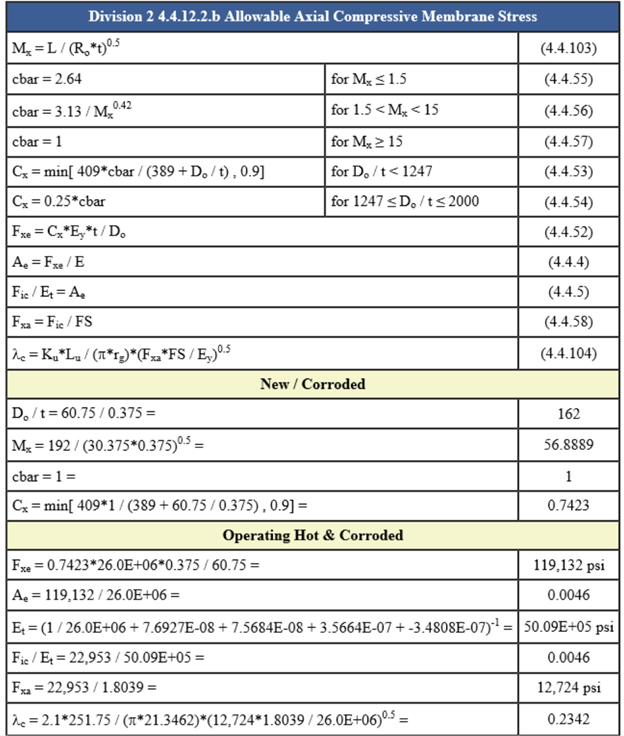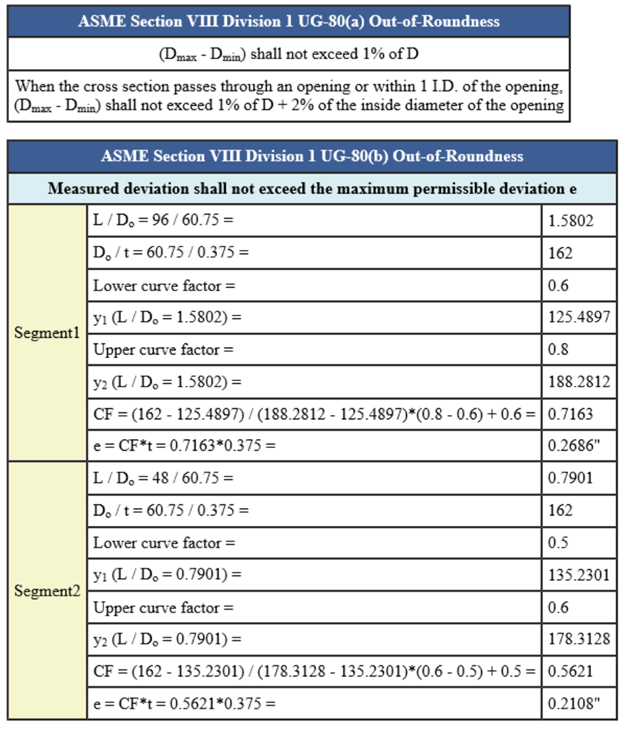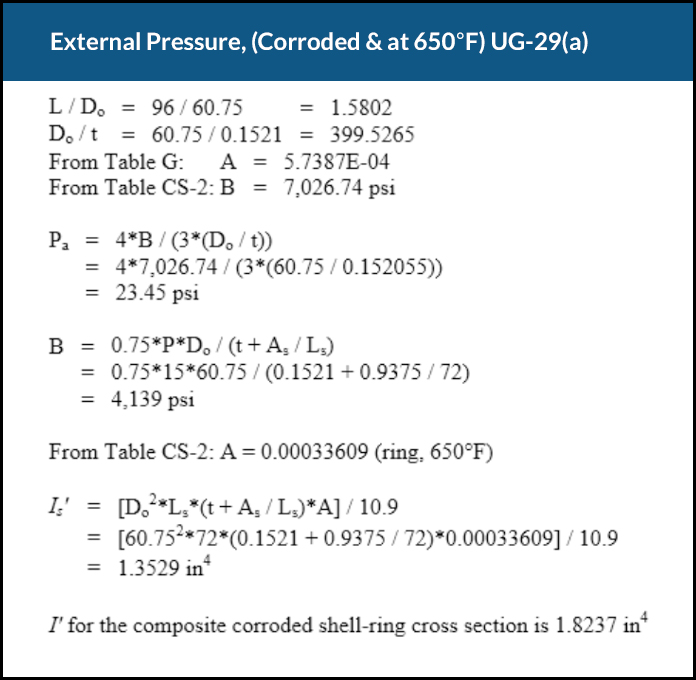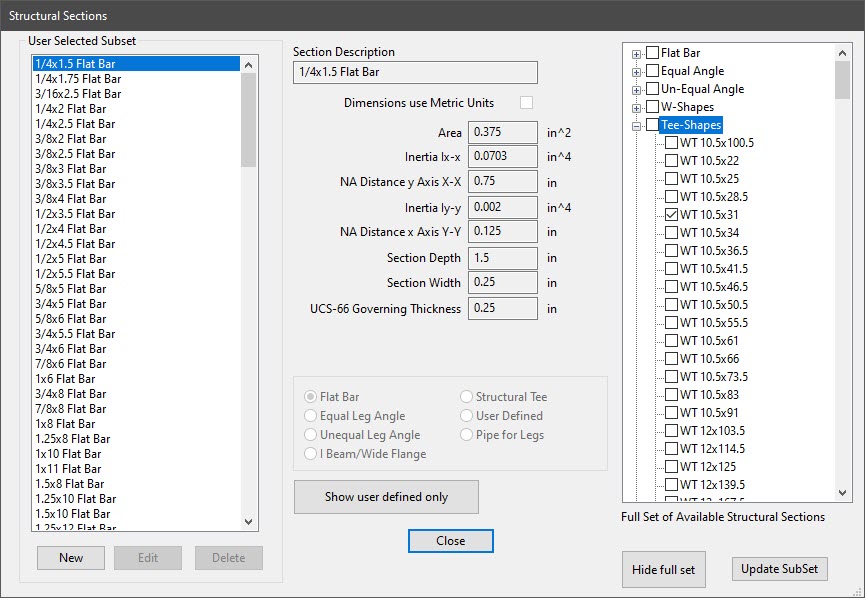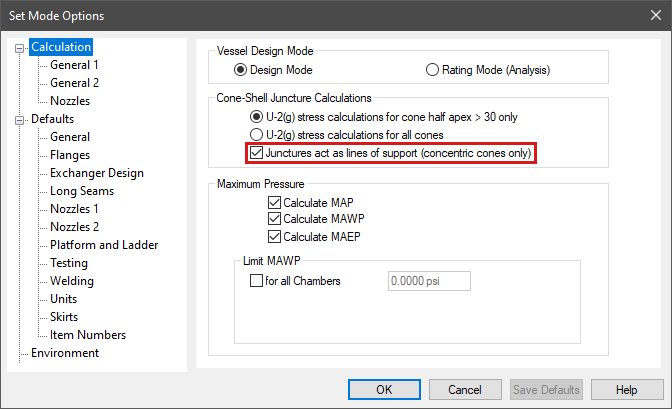External Pressure Design
External Pressure Design
External pressure, sometimes called full vacuum, can govern the design of many types of pressure vessels. Vessels under external pressure fail by buckling collapse. Because of this, UG-28 rules require the overall vessel geometry to be considered. This is a time consuming trial and error process when done without the right software. COMPRESS provides the tools and calculations needed to assist designers with this complex task.
All pressure vessels subject to an external pressure of 15 psig or greater must meet the requirements of UG-28. External pressure design is primarily a function of vessel geometry. A big factor in this calculation is the unsupported length ‘L’. If external pressure is requiring vessel sections to get too thick you could reduce the unsupported length by adding a line of support. COMPRESS addresses this by providing an input called “trial length”. This allows you to see what a reduced unsupported length would do before adding stiffening rings.
A before and after image on how minimum thickness is impacted when considering trial length.
External Pressure and U-2(g)
External Pressure and U-2(g)
Code paragraph U-2(g) requires that external loads acting in combination with pressure on the vessel be considered. It however does not mandate a specific engineering analysis to use. For vertical vessels designed for external pressure COMPRESS offers two solutions, Appendix 46 (Division 2 Rules) and the Bergman interaction equations.
The Bergman Paper
The Bergman Paper
COMPRESS by default uses the method outlined in the Bergman Paper to check for buckling of vessels subjected to external pressure in combination with other compressive loads. External loads due to wind (or seismic) and weight on vertically supported vessels produce longitudinal compression that adds to the load from external pressure. The Bergman paper discusses designing pressure vessels for these load combinations and has been used successfully for many years. The interested reader can find a copy of the Bergman paper here:
The Design of Vertical Pressure Vessels Subjected to Applied Forces – by E. O. Bergman
Allowable Compressive Stress – Appendix 46
Allowable Compressive Stress – Appendix 46
COMPRESS features the option to use the provisions of Appendix 46 for external pressure design. This allows designers to take advantage of the more accurate equations from ASME VIII-2, Part 4.4 (Division 2). Appendix 46 requires that Division 1 vessels still be designed using Division 1 allowable tensile stresses. As buckling is the failure mode for external pressure, the allowable compressive stresses calculated by Part 4.4 are allowed in Division 1 designs.
One advantage of using the Appendix 46\Part 4.4 equations is that they include consideration of external pressure plus axial compression. This means that a U-2(g) analysis is not required. Another advantage is that cylinders designed to Part 4.4 are often thinner than those designed with UG-28. Although Appendix 46 is just as safe as UG-28, some jurisdictions do not yet permit the use of Appendix 46 so it’s best to check before relying on this method.
Out of Roundness Tolerances (UG-80)
Out of Roundness Tolerances (UG-80)
The rules of UG-28 are based on an assumed out-of-roundness tolerance. Consequently, vessels that are outside of this tolerance pose a potential danger of collapse when subjected to external pressure. Meeting this out-of-roundness requirement is mandatory per ASME VIII. COMPRESS provides the calculations required by UG-80 to help ensure compliance with the Code.
Stiffening Ring Calculations (UG-29)
Stiffening Ring Calculations (UG-29)
When designing a pressure vessel for both internal and external pressure one approach is to reduce the unsupported length until external pressure no longer governs. For vessels subject to external pressure only it is often more economical to add intermediate lines of support than to increase thickness. In either case, adding strategically placed lines of support is the solution. Code paragraph UG-29 addresses the structural requirements for these lines of support (stiffening rings).
In design mode, COMPRESS will automatically select the minimum ring size required to meet UG-29 inertia requirements. Rings are selected by referring to the built-in structures database alleviating the need to go through a structures list and manually choose the correct type and cross section.
Selecting Stiffening Rings
Selecting Stiffening Rings
COMPRESS includes a large library of common structural shapes that can be used as stiffening rings. Users also have the option to add or remove shapes as desired. Adding shapes makes them available to the COMPRESS automatic selection routines while removing them does the reverse.
User-defined structures of any cross section can also be added.
Cone-to-Cylinder Junctions (Appendix 1-8)
Cone-to-Cylinder Junctions (Appendix 1-8)
When designing cone-to-cylinder junctions for external pressure COMPRESS users have the option of treating the junction as a line of support. This will reduce the unsupported length and reduce shell thickness but may come at the expense of additional junction reinforcement.
Cone-to-cylinder junctions must provide sufficient reinforcing area per UG-33(f) and Appendix 1-8. When the junction also acts as a line of support, these paragraphs additionally require the junction to meet the stiffness requirements (moment of inertia) of Appendix 1-8. COMPRESS performs all of these calculations saving time and reducing errors.
